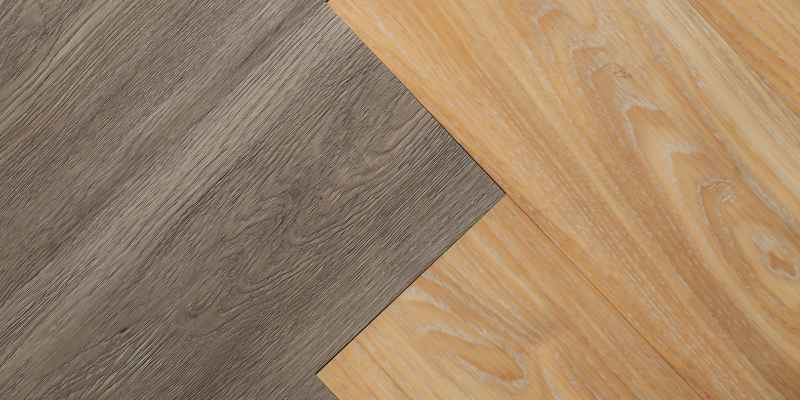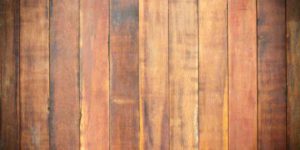Poplar wood is typically tan to greenish-gold with streaks of gray or blue, known as rainbow poplar. Poplar wood, a versatile and commonly used hardwood, features a color palette ranging from creamy white to pale yellow in its light sapwood.
With heartwood hues of tan to greenish-gold and occasional streaks of gray or blue, poplar wood exhibits unique mineral staining. These distinct color variations, including the stunning rainbow poplar, make poplar a popular choice for various woodworking projects. While prized for its strength and fine texture, poplar’s coloration adds a touch of character to furniture, cabinetry, and other wooden creations.
Let’s delve deeper into the colorful world of poplar wood and its distinctive characteristics.
Characteristics Of Poplar Wood
Poplar wood, known for its diverse range of colors and unique characteristics, is a popular choice in woodworking. Let’s delve into the distinct features of this versatile wood.
Heartwood And Sapwood
The heartwood of poplar wood showcases a tan to greenish-gold hue with occasional streaks of gray or blue, indicating mineral staining that doesn’t alter the wood’s properties. Sapwood in poplar is not always clearly distinguished from the heartwood.
Grain And Texture
Poplar wood exhibits a fine, even texture that adds to its versatility. With a soft and lightweight nature, poplar is remarkably strong, making it an ideal choice for both novice and experienced woodworkers.
Natural Color And Mineral Staining
Poplar wood is typically a white or creamy yellow hue, but it can also have brownish tones or mineral streaks of various colors, known as “rainbow poplar. ” The heartwood may show occasional streaks of gray or blue due to mineral staining, but this does not affect the wood’s physical characteristics.
Typical Color Range
Poplar wood is known for its diverse color range, which includes natural hues as well as variations caused by mineral staining. The heartwood of poplar is typically a tan to greenish-gold color, occasionally showcasing streaks of gray or blue. These streaks are indicators of mineral staining and do not affect the physical characteristics of the wood. It is important to note that the sapwood is not always clearly demarcated from the heartwood.
Effect Of Mineral Staining
Mineral staining can add unique and interesting patterns to poplar wood. While it does not alter the wood’s physical properties, it creates visually appealing variations in color. These mineral streaks can appear in shades of gray or blue, contrasting beautifully against the natural tan to greenish-gold hue of the heartwood. The result is often referred to as “rainbow poplar,” which adds a touch of vibrancy and character to any woodworking project.
Uses And Characteristics Of Poplar Wood
Poplar wood is not only aesthetically pleasing but also boasts remarkable qualities that make it highly sought after in the woodworking industry. Despite being soft and lightweight, poplar wood is incredibly strong, making it an excellent choice for a wide range of applications. Its fine and even texture adds to its appeal, making it a favorite among both beginner and experienced woodworkers.
Whether you’re looking to create furniture, cabinetry, or decorative accents, poplar wood is a versatile option that can be stained or finished to achieve the desired look. Its natural color range, including the unique effect of mineral staining, provides endless design possibilities. From traditional to contemporary styles, poplar wood offers a timeless beauty that can enhance any project.
Application And Utility
When it comes to the application and utility of poplar wood, it is important to understand its characteristics and advantages. Poplar wood is known for its versatile nature and is widely used in various woodworking projects. In this section, we will explore the common uses of poplar wood in woodworking and its advantages in construction.
Common Uses In Woodworking
Poplar wood finds its application in various woodworking projects due to its unique characteristics. This lightweight yet strong wood is a popular choice for beginner woodworkers. Here are some common uses of poplar wood:
- Cabinetry: Poplar wood is a preferred choice for making cabinets due to its ease of workability and stability.
- Furniture: From chairs to tables and beds, poplar wood is often used to create beautiful and durable furniture pieces.
- Trim and Moldings: Poplar wood’s ability to take paint and stain well makes it a great choice for trim and moldings in interior design.
- Turnings: The straight grain and fine texture of poplar wood make it ideal for turning projects like bowls, vases, and decorative items.
Advantages In Construction
In addition to its applications in woodworking, poplar wood offers several advantages in construction. Here are some key benefits:
- Strength and Durability: Despite being lightweight, poplar wood is remarkably strong and durable, making it suitable for structural applications.
- Workability: Poplar wood is easy to work with, allowing for precise cutting, shaping, and joinery.
- Resistance to Warping: Poplar wood exhibits good dimensional stability, minimizing the risk of warping and twisting.
- Acceptance of Stain and Paint: Poplar wood accepts stain and paint evenly, providing a smooth and flawless finish.
- Affordability: Compared to other hardwoods, poplar wood is relatively more affordable, making it an economical choice for construction projects.
Overall, poplar wood with its various applications in woodworking and advantages in construction proves to be a versatile and valuable material suitable for a wide range of projects.
Color Transformation Over Time

Poplar wood undergoes a fascinating color transformation as it ages, influenced by various factors such as light exposure and air quality. Understanding how poplar wood evolves in color over time can help in appreciating its natural beauty and adaptability.
Response To Light And Air Exposure
Poplar wood’s color may modify depending on the amount of natural light and air it is exposed to. It may lighten or darken over time, creating unique patinas that enhance its visual appeal.
Comparison With Other Wood Species
When compared to other wood species, poplar wood stands out for its versatility in color transformation. While some woods maintain their original hue, poplar wood can exhibit a wider range of tones, from creamy yellow to brownish with mineral streaks.
Staining And Finishing Techniques
Poplar wood offers a versatile canvas for applying various staining and finishing techniques. Whether you want to enhance its natural color or completely transform its appearance, understanding the best practices is crucial.
Best Practices For Staining Poplar
- Prep surface: Sand poplar wood thoroughly before staining to ensure a smooth finish.
- Test on small area: Always test your stain on a small hidden area to check the desired color.
- Apply evenly: Use a brush or cloth to apply stain evenly in the direction of the wood grain.
- Allow drying: Let the stain dry completely before applying a second coat, if needed.
Preserving The Natural Color
- Clear finishes: Opt for clear finishes like varnish or lacquer to preserve the natural beauty of poplar.
- Avoid dark stains: Dark stains can obscure the natural color of poplar, so consider lighter shades for a more natural look.
- Protective coats: Apply protective topcoats to shield the wood from moisture and wear over time.
Rainbow Poplar Phenomenon
Poplar wood is known for its unique coloration, with the phenomenon known as “Rainbow Poplar” capturing the attention of woodworkers and enthusiasts alike. This stunning display of colors adds an element of excitement and intrigue to any project. Let’s explore the unique color spectrum of Rainbow Poplar and discover why it is so sought after.
Exploring The Unique Color Spectrum
Rainbow Poplar showcases a wide range of colors, making each piece truly one-of-a-kind. The heartwood of Poplar typically ranges from a tan to greenish-gold hue. However, what sets Rainbow Poplar apart is the occasional streaks of gray or blue, which indicate mineral staining that does not affect the physical characteristics of the wood. These streaks create a beautiful contrast against the base color, adding depth and character.
The sapwood of Poplar is not always clearly demarcated from the heartwood, blending seamlessly to create a harmonious color palette. This natural blending enhances the visual appeal of Rainbow Poplar, giving it a vibrant and organic appearance.
Additionally, some pieces of Rainbow Poplar may showcase brownish tones or mineral streaks of various colors, further enhancing its uniqueness. This variation in color gives woodworkers endless possibilities for creative projects that stand out.
Availability And Rarity
Rainbow Poplar is not as readily available as other types of wood, making it a more rare and desirable choice for woodworking projects. While Poplar itself is a popular hardwood known for its versatility and affordability, finding pieces with the captivating Rainbow Poplar coloration can be a bit more challenging.
Woodworkers often search for specialty suppliers or local sawmills to source Rainbow Poplar, as these places tend to carry more unique and exotic wood options. The scarcity of Rainbow Poplar adds a level of exclusivity to any project crafted with this wood, making it a true statement piece.
Furthermore, with the increasing demand for sustainable and eco-friendly materials, the popularity of Rainbow Poplar has surged. Its natural beauty and environmentally conscious appeal make it a preferred choice for those seeking to create stunning projects with a touch of sustainability.
In Conclusion
Rainbow Poplar is a truly remarkable wood that brings a burst of color to any woodworking project. Its unique color spectrum, ranging from tan to greenish-gold with streaks of gray, blue, or other colors, creates a captivating visual experience. While Rainbow Poplar may be more difficult to find, its rarity only adds to its desirability. If you’re looking to create a standout piece with vibrant and organic hues, consider using Rainbow Poplar for your next woodworking project.

Frequently Asked Questions Of What Color Is Poplar Wood
What Does Poplar Wood Look Like?
Poplar wood is tan to greenish-gold with streaks of gray or blue. The heartwood color can vary with mineral streaks.
What Is The Color Of Poplar Finish?
Poplar finish color can range from tan to greenish-gold with streaks of gray or blue. Its sapwood may not always be clearly demarcated from the heartwood. The wood is also available in white or creamy yellow hues and can have mineral streaks, known as “rainbow poplar.
Is Poplar A Light Wood?
Yes, poplar wood is a light wood, typically white or creamy yellow in color. It is soft, lightweight, and has a fine texture.
What Does Poplar Tree Look Like?
A poplar tree has green-white bark and reddish-yellow heartwood, often with gray or blue streaks. It’s soft, light, and prone to breakage.
Conclusion
Poplar wood showcases a unique color palette, ranging from tan to greenish-gold with hints of gray or blue. Its versatility makes it a popular choice among woodworkers, combining strength with a lightweight feel. Embrace the natural beauty of poplar wood in your projects.
Explore its various color variations for stunning results.


